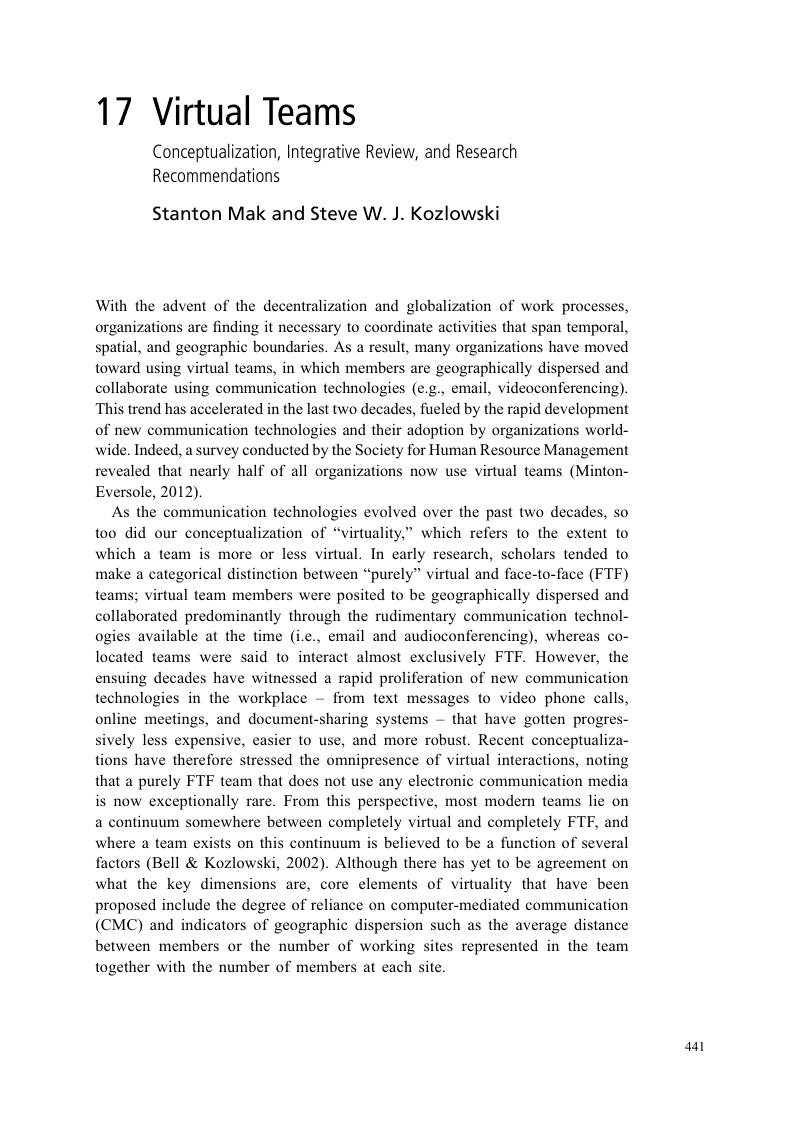Book contents
- The Cambridge Handbook of Technology and Employee Behavior
- The Cambridge Handbook of Technology and Employee Behavior
- Copyright page
- Dedication
- Contents
- Notes on Contributors
- Preface
- Acknowledgments
- Part I Technology in I-O Psychology
- Part II Technology in Staffing
- Part III Technology in Training and Development
- Part IV Technology in Leadership and Teams
- 15 Leading from a Distance
- 16 Managing Distributed Work
- 17 Virtual Teams
- 18 Social Media and Teamwork
- Part V Technology in Motivation and Performance
- Part VI Technology in Statistics and Research Methods
- Part VII Interdisciplinary Perspectives on Employees and Technology
- Index
- References
17 - Virtual Teams
Conceptualization, Integrative Review, and Research Recommendations
from Part IV - Technology in Leadership and Teams
Published online by Cambridge University Press: 18 February 2019
- The Cambridge Handbook of Technology and Employee Behavior
- The Cambridge Handbook of Technology and Employee Behavior
- Copyright page
- Dedication
- Contents
- Notes on Contributors
- Preface
- Acknowledgments
- Part I Technology in I-O Psychology
- Part II Technology in Staffing
- Part III Technology in Training and Development
- Part IV Technology in Leadership and Teams
- 15 Leading from a Distance
- 16 Managing Distributed Work
- 17 Virtual Teams
- 18 Social Media and Teamwork
- Part V Technology in Motivation and Performance
- Part VI Technology in Statistics and Research Methods
- Part VII Interdisciplinary Perspectives on Employees and Technology
- Index
- References
Summary

Information
- Type
- Chapter
- Information
- The Cambridge Handbook of Technology and Employee Behavior , pp. 441 - 479Publisher: Cambridge University PressPrint publication year: 2019
References
Accessibility standard: Unknown
Why this information is here
This section outlines the accessibility features of this content - including support for screen readers, full keyboard navigation and high-contrast display options. This may not be relevant for you.Accessibility Information
- 19
- Cited by
